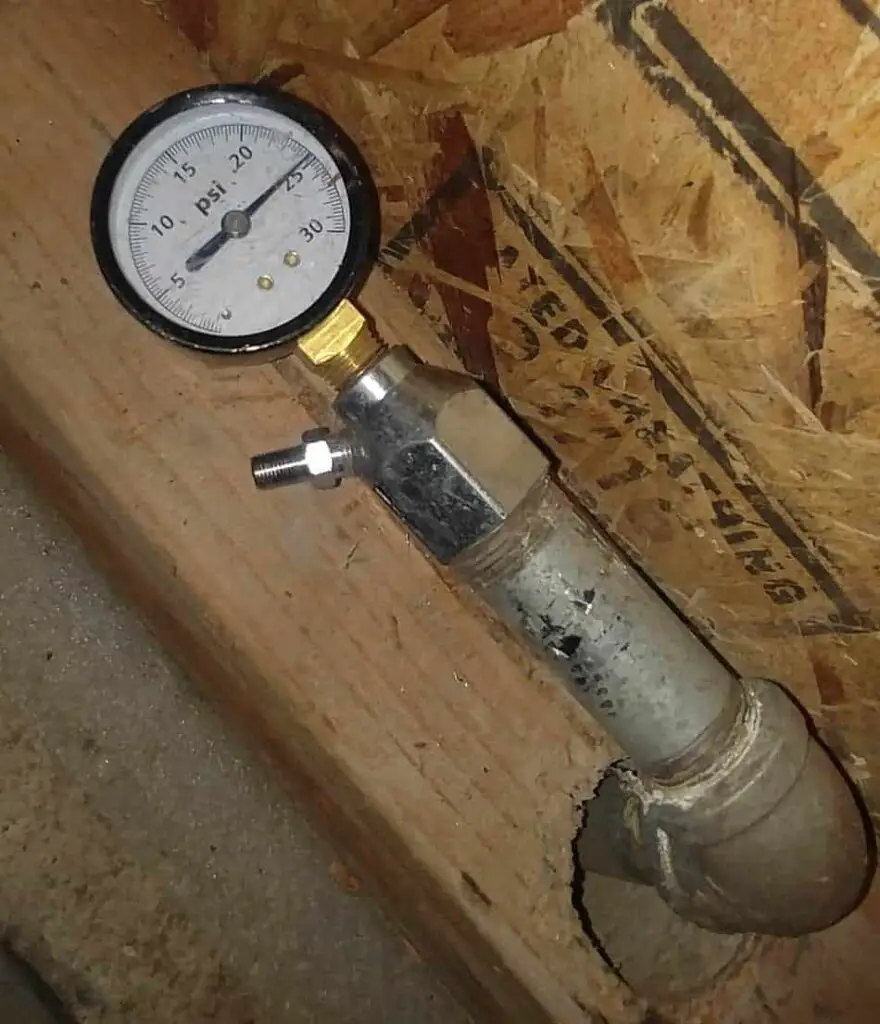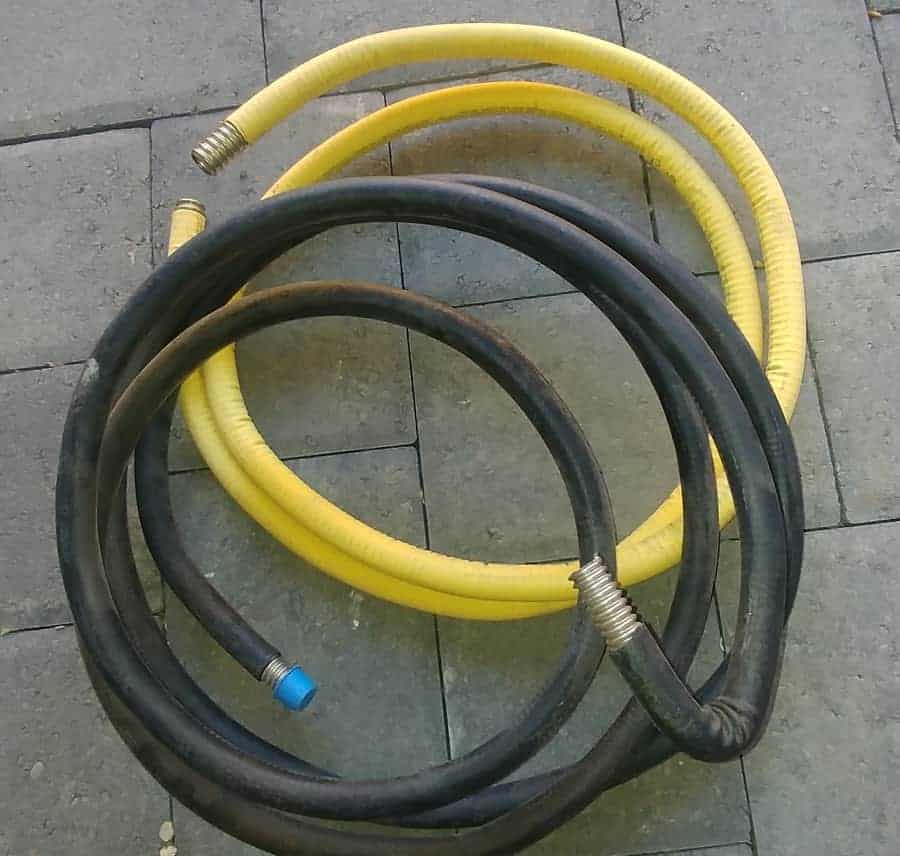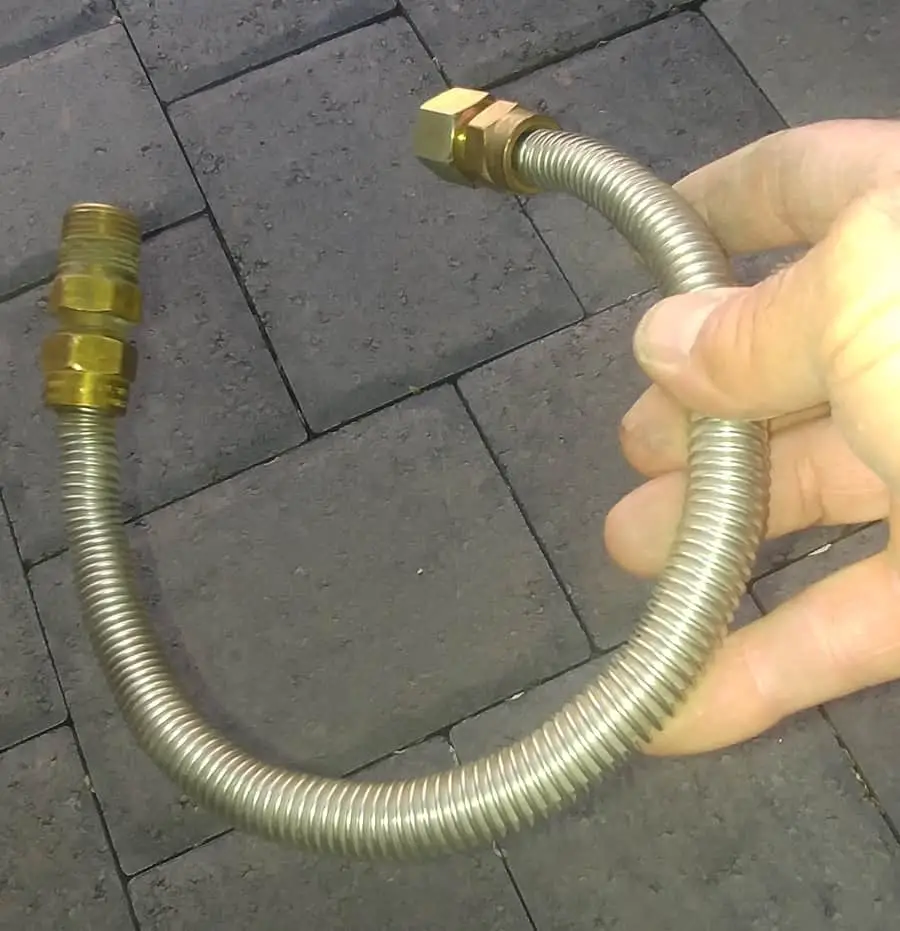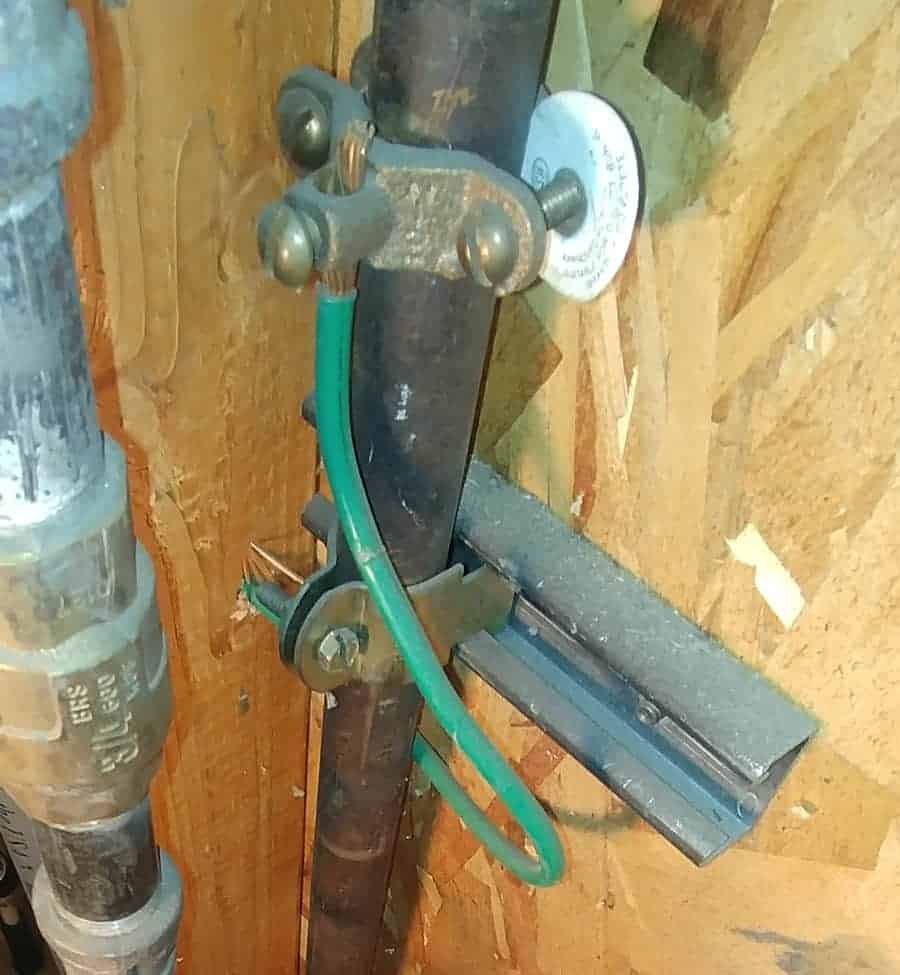Yes in most jurisdictions you can. It’s a very good DIY project and it can be done very safely. First you need to obtain the proper permit. Install the piping with a pressure test on the pipe and get an inspection to approve the installation. With an approval you make the final connections and you’re set.
Never attempt to do work on, or install gas piping without first checking with local code authorities and obtaining the proper permits.
When you begin to install the gas piping, it does not mean connecting to the source of gas until it has been pressure tested and inspected.
A pressure test simply consists of installing a pressure gauge on one end and adding about 25 lbs of air to your new line with the other end capped or plugged.

You should pressurize your new line at least 24 hours before your inspection to be sure it’s holding air.
If the line is not holding pressure you’ll need to spray a mix of water and dish soap on all the joints to find the leak and make the repairs.
CAUTION: Always use compressed air to fill lines. A good tire pump will do a fine job unless your doing a super big job. An inspector may ask you how long the line has been holding air and then want to observe that the gauge isn’t moving while he’s there.
How many pounds of air to test the pipe and how long does the pressure have to hold are two of the questions to ask your building department when obtaining your permit.
Most inspectors are very patient with home owners doing their own work. They will even offer tips and instruction when you ask. By the questions you ask an inspector, he or she may even tell you that perhaps you shouldn’t do this project. An alternative is to have a helper with the skills you may not have.
So you should have some basic skills before attempting a gas line installation. If you have righty tighty and lefty loosey down and understand the difference between a pipe wrench and channel locks, then you’re probably okay.
One of the biggest misunderstandings that my customers have when wanting to add appliances is thinking that they can just run a new line from the water heater or a furnace or another appliance.
Or another approach they want to take is thinking that the gas line is right here, we could just splice in and it would only be a few feet of pipe. Not so.
The pressure in a residential gas line is very low. Each appliance has a specific amount of gas required and the piping is sized to supply that need. If you take some gas away from one appliance to feed another, the new and the old appliance would starve for gas.
What a lot of people don’t understand is that the pressure of the gas from the meter into the house is less than one pound. In fact it closer to .25 psi which is very easy to work with. Except for those areas that have 2 lb. gas.
homeheatproblems.com
Like, if your neighbors dog came over every day and ate from your dog’s dish, your dog would only get half as much. To correctly add gas appliances to an existing system, a completely new line should be run from the gas meter.
If you previously had no gas lines and you are installing a completely new line or set of lines, then you must be dealing with your local gas company and it’s obvious you will start from where they plan to set their new gas meter.
How Do You Size A Natural Gas Line?
Sizing your gas line is critical. You need the Btu’s of each appliance and the distance to the farthest appliance.
Make a schematic of your job with the distances and Btu’s as described in this next video:
What Type Of Pipe Is Used For Natural Gas?
Black iron pipe has been the standard for many years. Plumbers and HVAC contractors would show up to a job, drag out all this equipment and proceed to cut and thread pipe. Just the set up take time that could be saved by using CSST.
It can be messy and time consuming. Each joint becomes a potential leak and a leak can cost even more time on the job. Taking the pipe back apart and starting over is sometimes the only solution.
Steel pipe threads are machined and tapered to make a better seal. Be sure not to use the couplings that may come on the steel pipe. They are meant to protect the threads for shipping, they will leak because they are not tapered.
A HVAC mechanic with a company I worked for many years ago put together a large piping system for a college addition and used the couplings that came on each end of pipe. The whole job had to be done over because it wouldn’t hold a pressure test.
Generally people have more confidence in steel pipe verses Corrugated Stainless Steel Tubing because it’s been around for a very long time and it just feels stronger and more sturdy the flexible pipe.
Corrugated Stainless Steel Tubing or CSST pipe has become very popular over the past several years. It was invented in Japan in the 1980’s as an alternative to black iron pipe. Japan is a country hit by many earthquakes and CSST pipe provided a safer way to deliver gas with more flexibility verses the rigid black iron pipe.
Earthquakes literally shook the foundation of structures causing ton’s of gas leaks in black iron pipe.
Several manufacturers are distributing this product. It can be purchased on Amazon with all the required fittings and tools, which are few.
CSST pipe is meant to be used only indoors and above ground unless otherwise protected as you will find discussed later on in this article.
CSST comes in either yellow or black.

Black jacketed CSST pipe is arc resistant, something discussed further on in this article under the heading “Is Corrugated Stainless Steel Pipe Dangerous”.
Don’t confuse a flexible gas connector with CSST pipe. Flexible gas connectors are used to connect your appliance, furnace or water heater at the end of your new gas line.

About all you need to assemble CSST pipe is a tubing cutter, a good knife and some wrenches. Add in a couple paddle bits for holes and you have a gas piping system. And it’s so clean to work with.
Their are some awesome fittings, wall plates and things to attach and terminate that you can see by just searching CSST fittings.
Both CSST and black iron pipe are good for both natural gas and propane. Even galvanized pipe is permitted in many jurisdictions.
With CSST pipe their are fewer connections and the material can be carried into the home with ease.
CSST can be pushed and pulled through holes and joists and around corners with little concern over joints leaking as with threaded pipe.
After a job well done you sleep better knowing that the only place for potential leaks is at the end of each line. But those problems are solved with a pressure test.
Can Corrugated Stainless Steel Pipe Be Buried Under ground?
Yes it can with certain stipulations or restrictions. The CSST pipe must be inserted in a non-metallic pipe with no CSST fittings in the buried length of pipe.
A tracer wire must be along side in the ditch. The tracer wire is used to locate the underground gas pipe. This tracer wire would be energized and specialized equipment would be used to tell exactly where the pipe is buried.
Ditches for underground gas pipe are generally 18 inched deep with dirt or sand base free of rocks and other debris that could damage the pipe.
A newer product called Detectable Tape is buried about 6 inches over the gas pipe. Detectable tape provides a stop sign effect for those digging in an area that may have buried pipe.
This tape can be located by a means they call inductive locating. Similar to the tracer wire but with a no physically attached equipment.
Detectable tape can even be broken and still detectable unlike a tracer wire which if broken will not conduct a signal.
Pipe Dope vs Teflon Tape For Natural Gas or Propane
One of the biggest problems with applying any type of thread lubricant is making sure that none the material gets into the pipe. It’s meant to lubricate the thread to get a tighter joint and to seal defects in the machined threads.
Being sloppy with what ever product you choose can result in service calls in the future. Gas valves and other orifices don’t like junk stuffed down their throats.
That’s a concern with Teflon tape, especially if it’s ever loosened and re-tightened. Small particles break off and get sent down the pipe.
I’ve worked in counties were the inspector wouldn’t allow Teflon tape on gas lines.
Using a good pipe thread compound that you can find in most any hardware store does a great job.
Look on the label and it will say “use on natural and LP gas”. Apply it to all male threads entering black iron or galvanized pipe. You can get more technical that this if you wish, but this has been working for me for many years with no call backs.
CSST fitting require no pipe dope from the corrugated pipe to the CSST fittings. But some thread lubricant should be used to attach the brass CSST fitting to black or galvanized pipe.
Is Corrugated Stainless Steel Pipe Dangerous
CSST pipe is an approved pipe for delivering natural and propane gas to residential and commercial properties.
When properly installed it can be very safe and reliable.
Their are concerns over power spikes or surges and lightning. It’s only common that when a new product comes to market that their are unintended problems or consequences.
Even lightning strikes that are not direct hits can damage CSST pipe that is not bonded. Some houses that used CSST pipe prior to the code that required bonding are susceptible to damage from these surges.
These electrical surges can cause leaks in CSST pipe that can result in fire or explosions.
If you have a home with CSST pipe that was installed between 1990 and 2006 it would be a good idea to check to see if it’s bonded.
This image shows the bonding required that directly connects the gas line to the grounding system in the electrical panel.
The bonding wire must be no smaller than a #6 copper wire.

A licensed electrician may be required in your area to approve the bonding even though home owners are allowed to wire their own homes with a permit. Another question for your local building department because inspectors will help you with code specific to your application.
Your CSST pipe would be considered grounded if it is securely connected to the home or businesses grounding system. You should search for or read up on standards for CSST pipe grounding in your area.
As mentioned earlier, black CSST pipe has an outer cover that is arc resistant. This black covering is also slightly heavier than the yellow CSST pipe.
Related Topics
Training may be required to purchase CSST pipe and fittings. Amazon has CSST pipe and fittings available for purchase and some offer training to qualify for their particular product. It’s usually free and very easy to pass the testing they offer.
HOMEFLEX is one of the manufacturers available on Amazon and you can apply for their HOME-FLEX QUALIFIED INSTALLER CERTIFICATION. It says company name is optional so you could qualify as an individual and be certified to purchase their pipe and fittings.
TracPipe offers training and the popup has a selection for homeowner to qualify for purchasing. Go to https://www.tracpipe.com/residential-gas-pipe/request-training/ and fill out the training form.
I just talked with tech support at ProFlex and asked if home owners could qualify for purchasing their pipe and he said by all means yes. About 90% of all jurisdictions or counties allow home owners to install gas pipe in their own homes.
When you get to the question ” I am qualified by the local jurisdiction to acquire and install gas piping systems then click the box because you are as a home owner, qualified to do your own work.
